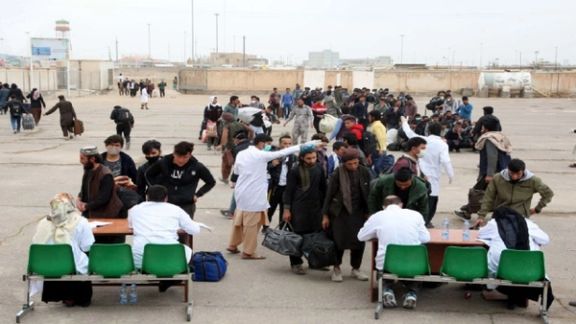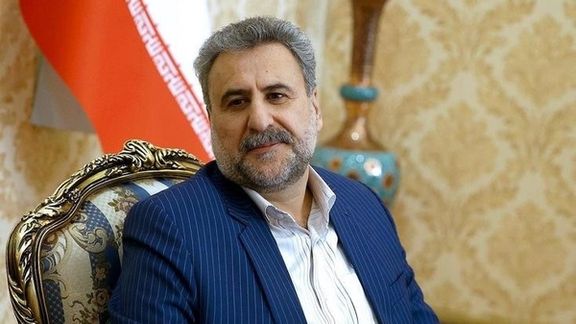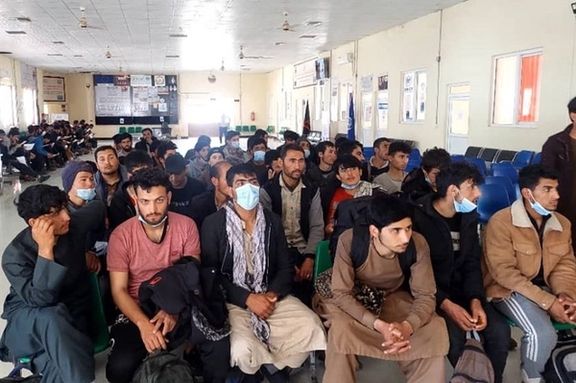Afghan Refugees Pose A Major Challenge In Iran, Ex-Lawmaker Says

The former chairman of Iranian parliament's national security and foreign policy committee says one in every five Afghans now lives in Iran.

The former chairman of Iranian parliament's national security and foreign policy committee says one in every five Afghans now lives in Iran.
Heshmatollah Falahatpisheh told Faraz Daily website that "every day some 10,000 Afghans arrive in Iran as illegal immigrants and surprisingly, they get a job and a place to live within two days." He said it is as if there is a well-organized system that arranges this influx.
The former lawmaker added that based on a 2016 statistics, 1.5 million of the 7.5 to 8 million Afghans living in Iran have a military background. Seven years later, the figure must have increased considerably.
According to Khabar Online, the Afghans have been fleeing from war, violence, natural catastrophes and violations of human rights under the Taliban rule. Many of them go to Iran, and some to Iraq and Syria to escape the calamities. People also see no economic future and no social freedoms under Taliban rule.
The website added that according to the Iranian Immigration Monitoring Agency, currently, 65 percent of all migrants in the world come from Afghanistan. Nicaragua and Syria, followed by Venezuela and Haiti. In 2022, Venezuela was on top of the list.

Khabar Online quoted a UN official as saying that between 500,000 to 1.5 million Afghans have arrived in Iran after the Taliban takeover of Afghanistan. In July, Interior Minister Ahmad Vahidi put the number of Afghan refugees in Iran at over five million.
In an unattributed commentary in July, Aftab News in Tehran said millions of Afghan immigrants consume at least $5b of around $90 to 100 billion annual subsidies that the government is spending to keep fuel, other energy and food prices down. The website suggested that this is only one of the ways in which the authorities are encouraging Afghans to stay in Iran.
The article suggested that the Islamic Republic might be facilitating Afghan immigration as a remedy to the problem of population decline. “We should not start to import a big population that lacks national and religious [conformity with the Iranian population] under the pretext that the country’s population may decline within the next few decades,” it said.
Falahatpisheh told Khabar Online that lack of accurate statistics about Afghans in Iran deprives hundreds of thousands from educational and health services in the host country. Furthermore, their presence has faced Iran with a major challenge as their movement cannot be monitored in terms of security, economic and social issues.

He further criticized the Iranian government for failing to keep tabs on Afghan refugees. He said: "A major part of those who come to Iran from Afghanistan have military background. We are facing an entity called the Taliban which knows nothing other than war and can turn the smallest issues into a war. Any issue in Iran-Afghan relations such as the ongoing border dispute provokes part of the Afghans in Iran.” Nonetheless, Khabar Online quoted Interior Minister Ahmad Vahidi as saying that Iran's security agencies monitor the Afghan refugees and make sure they do not pose a challenge to Iran.
Falahatpisheh further added than Afghans arrive in Iran like a wave and change the population milieu in some Iranian cities. While most Iranian families have only one child, most Afghan families have at least three children. After a decade, Afghans may comprise the majority of the population in those cities.
He added that Afghans arrive in Iran although they are aware of the shortcomings in the host country. Some of them are skilled workers and technicians and simply look for security and peace of mind in Iran.
Falahatpisheh said the number of Afghan refugees in Iran has been constantly on the rise, but Interior Ministry officials play with statistics to conceal their incapability to draw a proper plan to handle the issue.
Nonetheless, the former lawmaker insisted that the Iranian government should continue welcoming Afghan refugees. He said they have contributed to Iran's reconstruction after the 1980s Iran-Iraq war by doing the hardest jobs Iranian workers tend not to take.